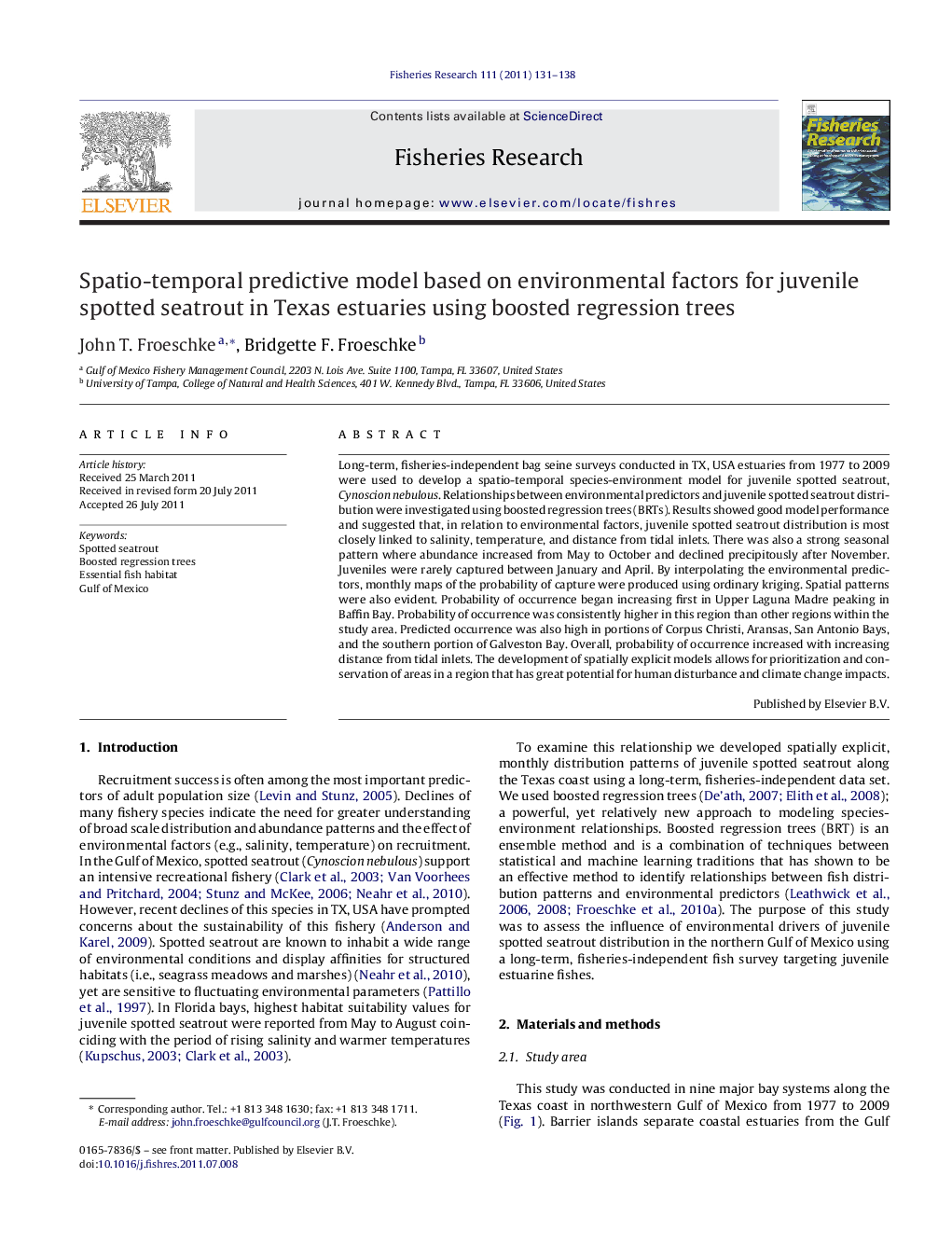| کد مقاله | کد نشریه | سال انتشار | مقاله انگلیسی | نسخه تمام متن |
|---|---|---|---|---|
| 4543495 | 1327150 | 2011 | 8 صفحه PDF | دانلود رایگان |

Long-term, fisheries-independent bag seine surveys conducted in TX, USA estuaries from 1977 to 2009 were used to develop a spatio-temporal species-environment model for juvenile spotted seatrout, Cynoscion nebulous. Relationships between environmental predictors and juvenile spotted seatrout distribution were investigated using boosted regression trees (BRTs). Results showed good model performance and suggested that, in relation to environmental factors, juvenile spotted seatrout distribution is most closely linked to salinity, temperature, and distance from tidal inlets. There was also a strong seasonal pattern where abundance increased from May to October and declined precipitously after November. Juveniles were rarely captured between January and April. By interpolating the environmental predictors, monthly maps of the probability of capture were produced using ordinary kriging. Spatial patterns were also evident. Probability of occurrence began increasing first in Upper Laguna Madre peaking in Baffin Bay. Probability of occurrence was consistently higher in this region than other regions within the study area. Predicted occurrence was also high in portions of Corpus Christi, Aransas, San Antonio Bays, and the southern portion of Galveston Bay. Overall, probability of occurrence increased with increasing distance from tidal inlets. The development of spatially explicit models allows for prioritization and conservation of areas in a region that has great potential for human disturbance and climate change impacts.
► Species-environment model for juvenile spotted seatrout Cynoscion nebulous was developed.
► Fish occurrence was linked to salinity, temperature, and distance from tidal inlets.
► Frequency of occurrence was highest from May to October.
Journal: Fisheries Research - Volume 111, Issue 3, November 2011, Pages 131–138